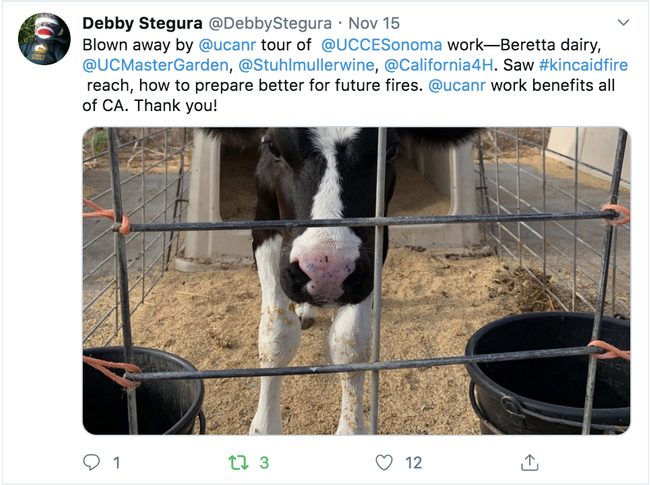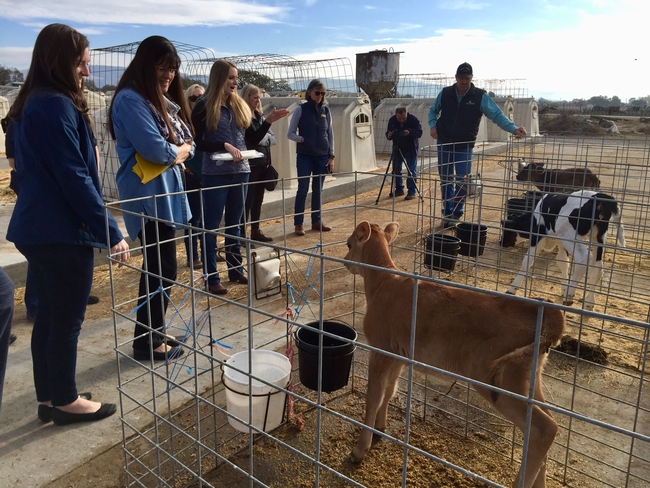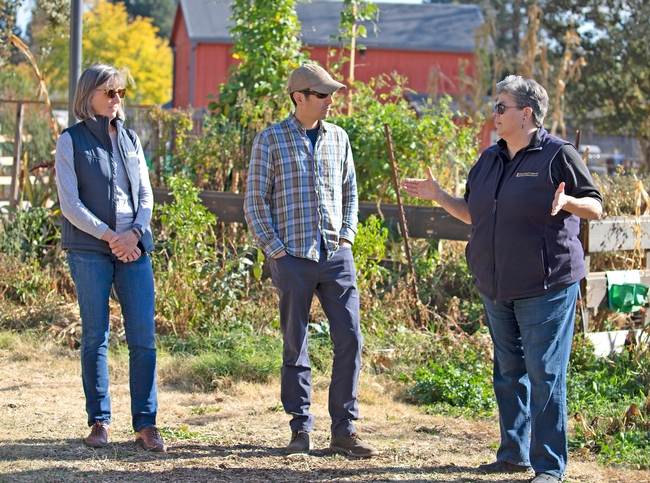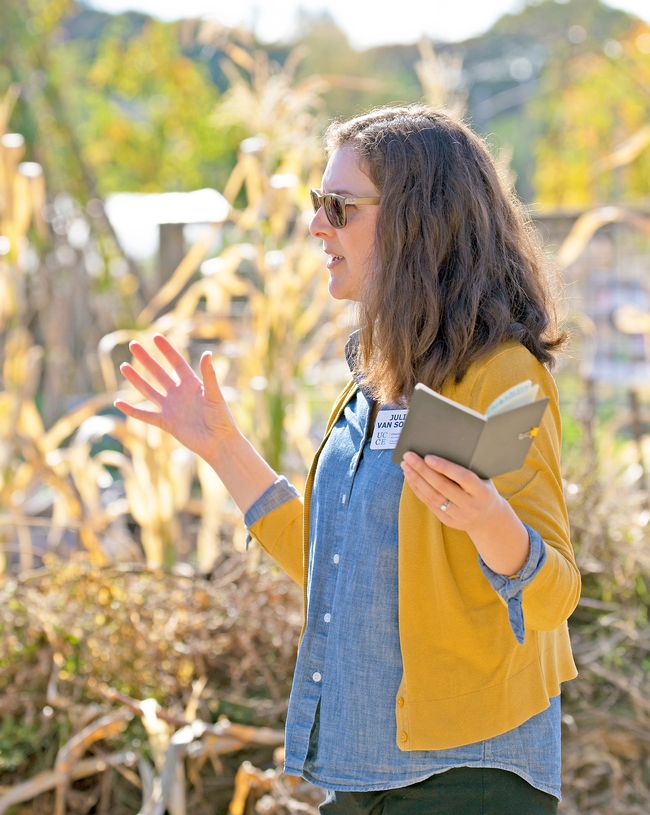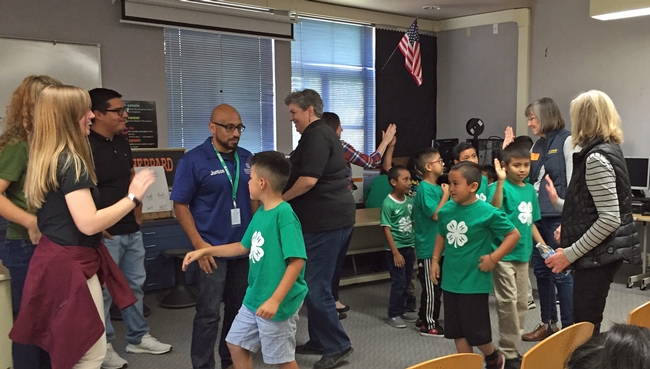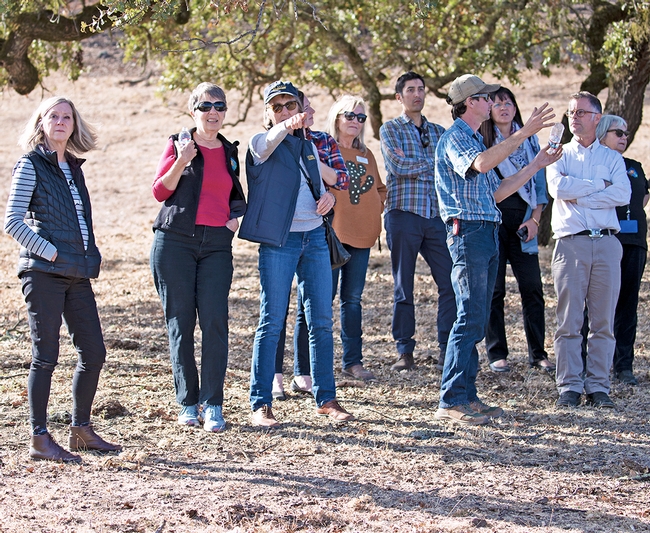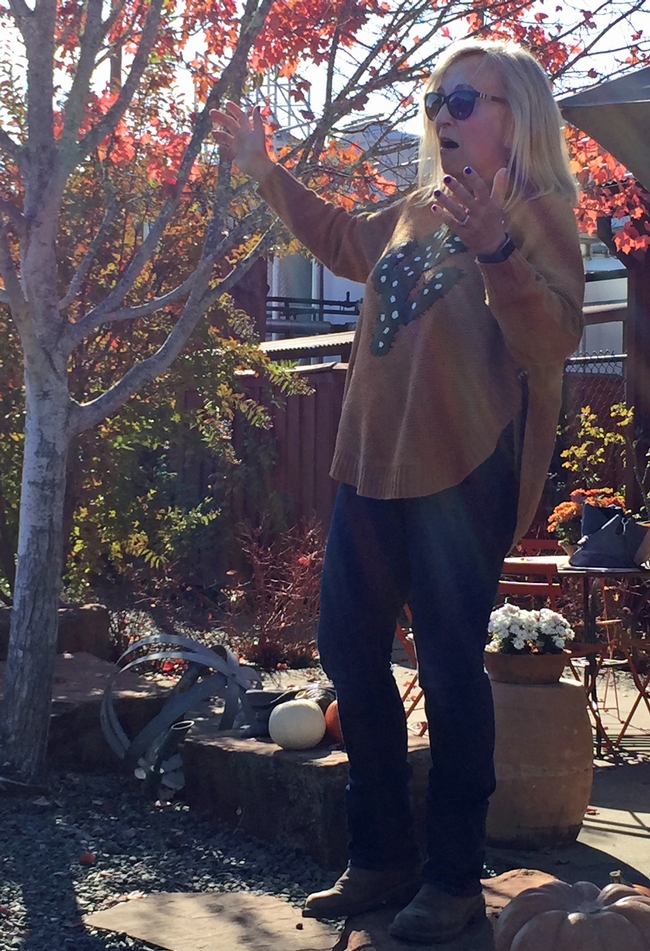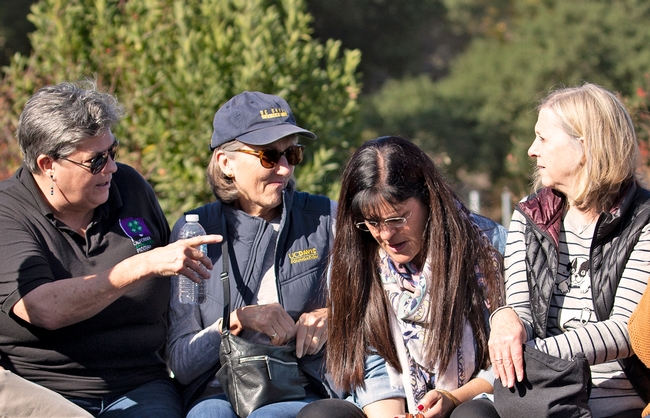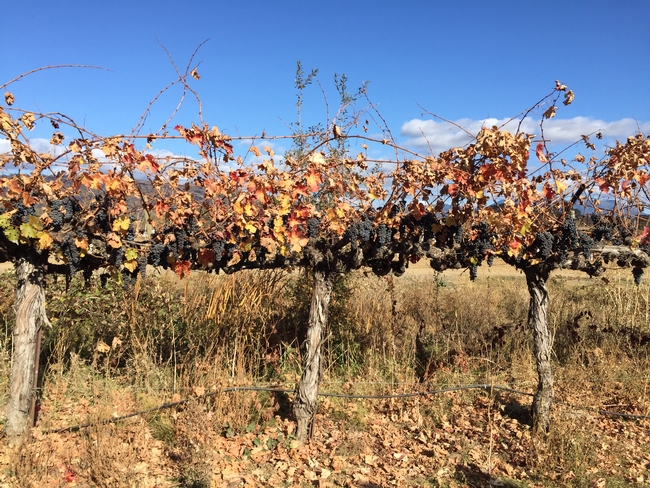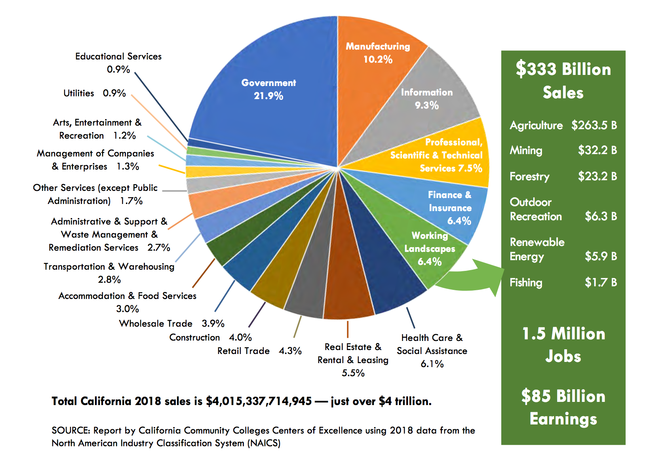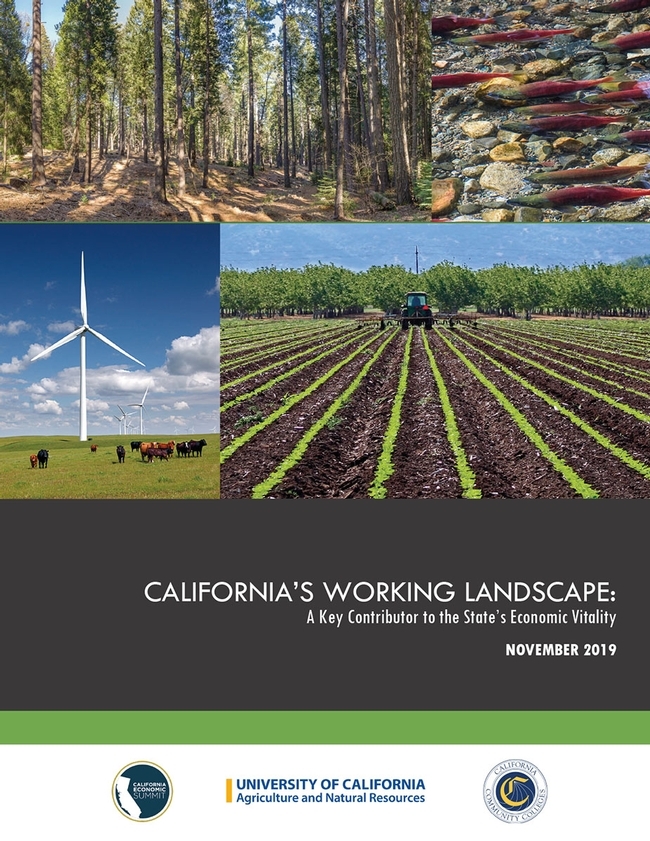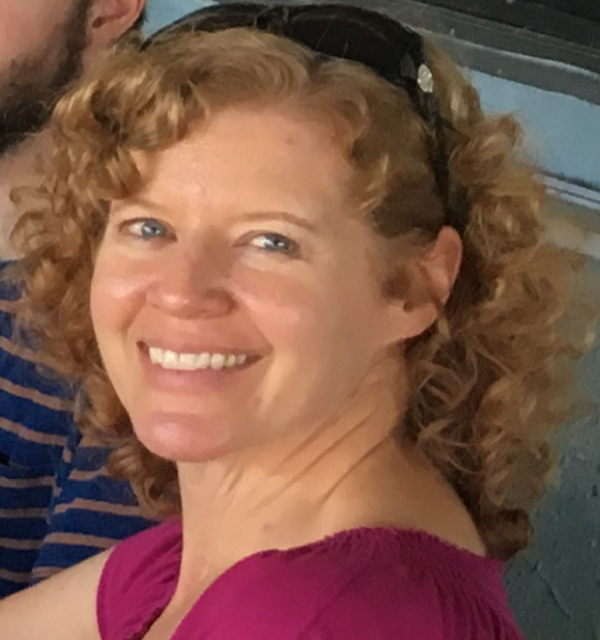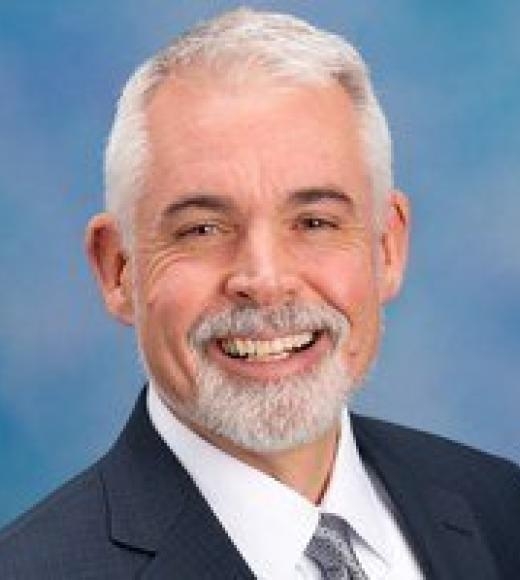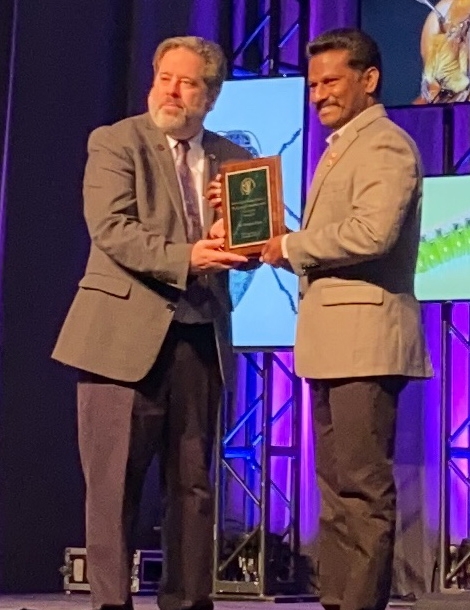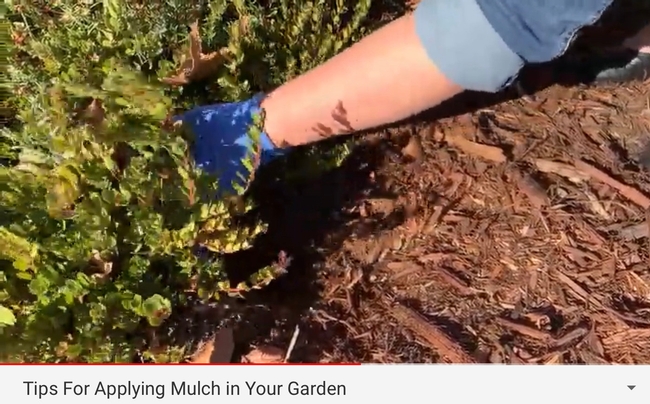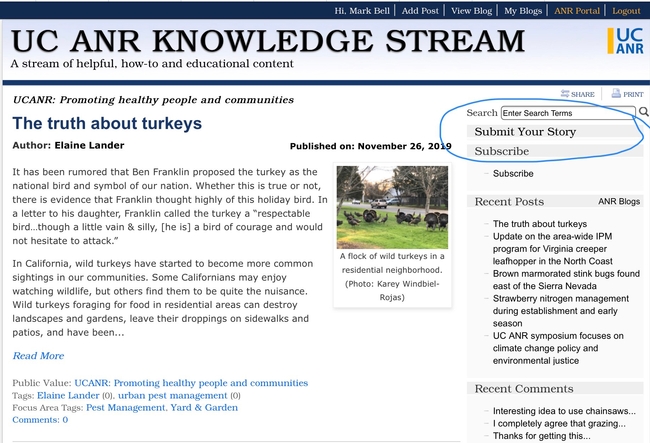Posts Tagged: George Goodall
Regent Stegura 'blown away' by UCCE Sonoma work
Vice President Glenda Humiston introduced alumni regent-designate Debby Stegura to UC Cooperative Extension staff and their community partners and clientele in Sonoma County on Nov. 15.
After visiting Beretta Dairy, Bayer Farm Park and Gardens, Sheppard Elementary and Stuhlmuller Vineyards, Regent Stegura tweeted:
“Blown away by @ucanr tour of @UCCESonoma work—Beretta dairy, @UCMasterGarden, @Stuhlmullerwine, @California4H. Saw #kincaidfire reach, how to prepare better for future fires. @ucanr work benefits all of CA. Thank you!”
The retired business litigator and UC Davis alumna was joined on the tour by Anne Shaw, secretary and chief of staff to the regents, and Michael Bedard, UC state government relations legislative director.
Stephanie Larson, UCCE director for Sonoma County, led the tour, which first visited Beretta Dairy.
“It's so nice to have a dairy advisor,” Sonoma County dairy farmer Doug Beretta said, crediting Randi Black, UC Cooperative Extension dairy advisor, with providing the technical assistance he needed to apply for a grant to reduce methane emissions.
Black, who joined UC ANR in 2017, helped four local dairies obtain grants totaling $2.5 million and said the projects propose to reduce emissions by 9,327 metric tons of CO2 equivalent over the next 5 years, which is comparable to removing 2,028 passenger vehicles from the road for a year.
Beretta talked about the work he has done at the dairy, based on UC research, to improve water quality. David Lewis, UCCE director for Marin and Napa counties, noted that similar manure management and water-quality work is being implemented by UCCE clientele in his counties.
Discussing the hardships created by low milk prices in the dairy industry, Beretta said he appreciated UCCE's agricultural ombudsman Karen Giovannini guiding producers who want to sell value-added products through the permitting process.
From the dairy, Stegura and the group met with Mimi Enright, UC Master Gardener Program manager for Sonoma County, UC Master Gardener volunteers and Julia Van Soelen Kim, North Bay food systems advisor at Bayer Farm Park and Gardens.
Collaborating with Bayer Farm, the Master Gardeners have been expanding outreach to Spanish-speaking members of the community. In addition to all of the traditional Master Gardener outreach, the Master Gardeners in Sonoma County have been actively promoting firewise landscaping to help Sonoma County residents better prepare for wildfires. Using UC ANR materials is critical, Enright said, to assure people the recommendations are based on scientific research.
After the Kincade Fire, when growers and gardeners asked if produce grown outdoors was safe to eat, Enright said UCCE Sonoma County could tell them, based on local research, it was safe to eat if consumers removed outer leaves and washed the produce and that the health benefits of eating fresh produce outweigh any trace contamination.
UCCE has been leading a coalition of community partners and government organizations to educate the community on reducing food waste and increasing food recovery. When PG&E announces public safety power shutoffs, they promote composting food that can't be eaten so it doesn't end up in a landfill.
“This kind of service in communities is not as well-known about UC as the campuses,” Humiston commented to the regent.
Across the street from Bayer Farm, Diego Mariscal, 4-H program assistant, has been collaborating with Sheppard Elementary School. It is one of several schools in the county providing 4-H afterschool clubs and other 4-H programs designed to nurture the next generation of Latino leaders. Last spring, Mariscal worked with families to build a 4-H soccer league for elementary school children. Parents, college and high school students were trained by 4-H to teach children teamwork, soccer skills and healthy eating habits. More than 200 new underserved youth participated in 4-H programs in Sonoma County during the 2018-2019 year.
A few of the soccer players, proudly wearing their green 4-H soccer uniforms, told the group what they liked about 4-H. 4-H All Star Corrianna E., who participates in the 4-H teen program, shared her experience in 4-H and expressed gratitude to the program for helping her overcome her shyness to become a strong public speaker. Corrianna's mother, Naomi Edwards, also shared her experience as 4-H Council President for Sonoma County.
The tour's last stop was at Stuhlmuller Vineyards, where vineyard manager John Gorman told Stegura and the group that California's preeminent grape growing region relies on UCCE for sound advice to manage pests and emerging problems.
“You want to know what's a good cultural practice? Rhonda Smith has answers backed up by hard science,” Gorman said of the UCCE viticulture advisor.
Larson introduced new UC IPM advisor Cindy Kron, who succeeds recent retiree Lucia Varela. Kron is launching an IR-4 project to study pesticides for olives, which isn't a big enough market to interest private investment in research. She's also monitoring pears for brown marmorated stink bug because early detection is key to controlling the pest. Spotted lanternfly isn't in California yet, but grapes are among its favorite hosts so Kron is working with UC Master Gardener volunteers and other community members to watch for the exotic pest.
The Kincade Fire destroyed fences and scorched the rangeland at Stuhlmuller Vineyards, forcing Gorman to sell the cattle. He showed the group where the fire failed to advance at the fire break created by the lush vineyards. As a result of the Kincade Fire, Gorman wasn't able to sell his petite verdot, chardonnay and cabernet grapes to wineries. To prove to the insurance company that smoke damaged the crop, his crew picked 30 tons of grapes for testing.
During and after the devastating fires in the North Bay, Larson, who is also a UCCE livestock and range management advisor, assisted livestock owners to gain access to their burned properties; this ensured their animals got food and water. She also organized resource meetings for landowners affected by fires, helping them apply for funding from government agencies and insurance companies for animal, forage and facility losses.
Larson also said her new grazing database Match.Graze has been well-received by ranchers and landowners in Sonoma and Marin counties who want to use grazing to reduce fire fuels. Land managers and grazers can sign up at ucanr.edu/matchgraze to hire sheep, goats, cattle and horses to manage fire fuels.
The regent tours in Sonoma Country and Fresno County were coordinated by Anne Megaro, government and community relations director. She is planning future tours for regents at UC South Coast Research and Extension Center and other locations in the spring.
New report reveals California’s working landscape is a major economic driver
California's working landscape and the industries associated with agriculture and natural resources are the sixth largest sector of the state's economy, according to a new study by the California Community Colleges Centers of Excellence for Labor Market Research, California Economic Summit and UC ANR.
“When people think of California's economy, they think of entertainment, information technology and other industries. They may not think of the working landscape,” said VP Glenda Humiston. “People may be surprised to learn that California's working landscape accounts for 6.4% of the state's economy, supports more than 1.5 million jobs and generates $333 billion in sales.”
“California's Working Landscape: A Key Contributor to the State's Economic Vitality” was released Nov. 7 by Humiston and Karen Ross, California Department of Food and Agriculture secretary, at the 2019 California Economic Summit in Fresno. More than 900 public, private and civic leaders from across California attended the summit which focused on workforce development, education, housing, infrastructure and ecosystem vitality, with an emphasis on lifting economic growth in all regions of the state.
“I'm excited about this report because it could have policy implications,” Humiston said. “We hope policymakers will understand they need to invest in working landscapes.”
To measure the economic impact of the working landscape, researchers analyzed federal data associated with employment, earnings and sales income of the nine segments that are essential to the working landscape: agricultural distribution, agricultural production, agricultural processing, agricultural support, fishing, forestry, mining, outdoor recreation and renewable energy.
Their analysis of 2018 data from the North American Industry Classification System showed the leading economic drivers were government (21.9%), manufacturing (10.2%), information (9.3%), professional, scientific and technical services (7.5%), and finance and insurance (6.4%). Working landscape ranked a close sixth with 6.4%.
Humiston noted that the estimate value for working landscape is conservative because it doesn't include veterinary services (because researchers couldn't separate livestock from pets) or any retail sales from food in California's 152,000+ supermarkets and convenience stores. It also does not include value of ecosystem services from working landscapes that have indirect economic benefits such as sequestering carbon, capturing water, providing wildlife habitat and offering scenic venues for recreational activities.
The researchers found the nearly 70,000 businesses associated with the working landscape paid $85 billion to workers in 2018 and generated $333 billion in sales income. In terms of job numbers, earnings, sales income and number of establishments, four segments dominate: agricultural distribution, agricultural production, agricultural processing and agricultural support.
In 2018, agricultural production provided the greatest number of jobs, more than 325,000, and generated the second highest sales income, $61 billion.
“I hope everyone reads the report,” Humiston said. “Too many people in this state take for granted where their food comes from and, I think, that has affected ANR funding and our ability to get the support that we need. They also take for granted the infrastructure that makes food safe, nutritious and available, and one of the most important parts of that infrastructure is UC Cooperative Extension because we keep the safety, productivity and other aspects of food production moving forward.”
To read the report “California's Working Landscape: A Key Contributor to the State's Economic Vitality,” visit http://ucanr.edu/WorkingLandscape. A one-page executive summary is available at http://bit.ly/2WTA7Vz.
Names in the News
Ingram named forest stewardship education academic coordinator
Kim Ingram is now an academic coordinator for forest stewardship education as of Nov. 18, 2019. She is also a trainer for UC ANR's Collaborative Facilitation Skills workshop and is involved with diversity, equity and inclusion efforts.
Prior to working with UCCE advisor Susie Kocher in forest stewardship education, Ingram had been an academic human resources business partner in UC ANR's Human Resources, leading academic recruitments, analyzing data and managing the academic merit and promotion process since 2015. From 2008 to 2015, Ingram was a community education specialist for the UC Sierra Nevada Adaptive Management Project and Sierra Nevada Watershed Ecosystem Enhancement Project. She planned, managed and implemented collaborations between UC, agencies, local communities and stakeholders, developed training curriculum and facilitated meetings, workshops and events related to forestry and fire issues in the Sierra Nevada. She was also an instructor of record for the California Naturalist Program and published a “Natural History of the Sierra Nevada” for use in California Naturalist Program trainings.
Ingram earned a master's degree in education, adult education and training from Colorado State University. She also holds a bachelor's degree in political science with a minor in environmental ethics from Humboldt State University.
Ingram is based in Davis and can be reached at kcingram@ucanr.edu.
Tomich elected AAAS fellow
Thomas Tomich has been named as a fellow of the American Association for theAdvancement of Science, the world's largest general scientific society.
Tomich, director of the Agricultural Sustainability Institute at UC Davis and UC ANR's Sustainable Agriculture Research and Education Program (SAREP), is among 443 new AAAS fellows elected this year.
Tomich is being recognized for "extraordinary contributions to generating sustainable solutions to global food system security through environmental science, effective policy, and collaborative research partnerships with underdeveloped economies globally."
His research spans agriculture and farming systems, economic development, food policy, and natural resource management. His publications include Transforming Agrarian Economies: Opportunities Seized, Opportunities Missed (1995); Environmental Services and Land Use Change: Bridging the Gap between Policy and Research in Southeast Asia (2004); Ecosystems and Human Wellbeing: A Manual for Assessment Practitioners (2010); The California Nitrogen Assessment: Challenges and Solutions for People, Agriculture, and the Environment (2016), and Agricultural Research for Rural Prosperity: Rethinking the Pathways, a special issue of the journal Agricultural Systems (2019).
The new fellows will be formally recognized on Feb. 15, 2020, at the AAAS annual meeting in Seattle.
ESA honors Dara for extension work
Surendra Dara, UC Cooperative Extension entomology and biologicals advisor for San Luis Obispo and Ventura counties, has received the 2019 Distinguished Achievement Award for Extension from the Entomological Society of America.
Dara addresses pest and disease issues of small fruits and vegetables with conventional and biological options, and finds alternative uses for entomopathogenic fungi as biofungicides and biostimulants. His research and extension program develops innovative solutions for sustainable crop production and protection, and he reaches out to the agricultural community locally, regionally and internationally.
As a volunteer, Dara has provided training in integrated pest management and crop production to farmers in Bangladesh, Haiti, Kosovo, Moldova, Mozambique, and Myanmar, and to visitors from Bosnia and Herzegovina, Bulgaria and Colombia.
Dara earned a Ph.D. in entomology from Virginia Tech and a postgraduate diploma in applied information technology from Information Technology Institute, Canada. He has nearly 25 years of experience in IPM and microbial control, working on 17 species of invasive pests and diseases and several endemic species throughout his career. He has authored or co-authored 350 scientific and extension articles, which include three co-edited books, one co-edited special issue of a journal, 13 book chapters and 50 peer-reviewed journal articles.
He serves on various committees at the University of California, the Society for Invertebrate Pathology, the Entomological Society of America, and the Association of Applied IPM Ecologists. He also publishes two e-journals and is a subject editor for the Journal of Economic Entomology. Dara was recently featured as a Western Innovator by Capital Press for his work in biologicals.
ESA presented him with the award at Entomology 2019 Nov. 19 in St. Louis, Mo.
Giving Tuesday presents opportunities Dec. 3
On Dec. 3, ANR is once again participating in Giving Tuesday's 24-hour global giving challenge, a movement about ordinary people coming together to do extraordinary things. Celebrated on the Tuesday after Thanksgiving, Giving Tuesday kicks off the charitable season. For ANR, the social media-driven #GivingTuesday is an opportunity to raise funds for UC Cooperative Extension county programs, research and extension centers, and statewide programs.
“Giving Tuesday gives us an opportunity to talk about our research and outreach to enhance food systems and create thriving communities, as well as all the other positive things everyone in ANR is doing to make life better for Californians,” said VP Glenda Humiston.
For UC ANR stakeholders, #GivingTuesday presents an opportunity to support the many programs and services that strengthen California communities each day and, more importantly, during times of crisis. Last year, over $120,000 was raised on #GivingTuesday to support UC ANR programs including the 4-H Youth Development Program and UC Master Gardener Program.
“Wherever you are in California, so are we. Our programs and research serve our communities— bringing practical, trusted answers to residents across the state. That's what our #GivingTuesday #NeighborCA campaign is all about,” said Emily Delk, director of annual giving for UC ANR.
“This year, I'm excited to share that we will have two match challenge funds totaling $40,000. Matching funds are a huge incentive to donors who want to double the impact of their gift,” said Delk.
The website, https://donate.ucanr.edu, has links to all of ANR's programs, Research and Extension Centers and UCCE offices and invites donors to designate programs or locations to which they wish to donate.
Toolkits are also available for county offices and programs to participate: https://ucdavis.box.com/s/hhs31eaycmrfs6m3dg0qgi4ld18o3jyc
The toolkits include:
- Sample tweets and social media posts
- Custom images to include in social posts
- Email templates to customize and send to supporters
The UC Master Gardener Giving Tuesday website is at http://mg.ucanr.edu/givingtuesday.
The 4-H Youth Development Program also has its own website at http://4h.ucanr.edu/GivingTuesday.
Although not as well-known as the shopping events Black Friday and Cyber Monday, #GivingTuesday appeals to people who are swept up in the spirit of giving at the end of the year.
This year Development Services has set a goal of collecting a total of $125,000 for 4-H and UC ANR from 500 or more donors on #GivingTuesday.
“The #GivingTuesday #NeighborCA campaign is a fun way for people in all ANR programs to give to the programs most important to them,” said Delk.
Unifying, Communicating and Advocating: Video and Knowledge Stream
Videos for all?
In our digital and always-connected age, it seems almost everyone loves a good video. Did you know “how to” videos are the second most popular type of video viewed on YouTube (behind “product review” videos)? Videos are a great way to share your practical information.
To help ANR staff and academics learn to make effective videos, the Strategic Initiatives leaders are planning a series of “how to produce good video” workshops. Stay tuned for early 2020.
Want to get involved? We welcome suggestions (content) that you can send to any of the SI leaders. We also welcome suggestions on people to help plan and implement the video workshops. We will also support webinars on this topic (e.g., WebANR or SI Spotlight Webinars).
The workshops will be implemented in partnership with Strategic Communications, News and Information Outreach in Spanish (NOS), UC IPM and the Communications Advisory Board.
Knowledge Stream gains traction
Got practical information to help people? You can help people find your practical information. Interest in and contributions to the Knowledge Stream blog (“news you can use”) is growing. These practical stories connect people to solutions for their real-world problems. The stories are not only featured in the Knowledge Stream blog, but can be featured on one of the six Focus Areas of the ANR website and/or one of the flexible UC ANR home page tiles.
Submit your story at https://ucanr.edu/blogs/KnowledgeStream. Remember to include links to your practical information sources.
SI leadership team
For more information, contact your SI leadership team:
- Jim Farrar (EIPD)
- David Lewis (Water)
- David Lile (SNE)
- Deanne Meyer (SFS)
- Lynn Schmitt-McQuitty (HFC)
- Mark Bell (Strategic Initiatives and Statewide Programs)

